Exhibition room
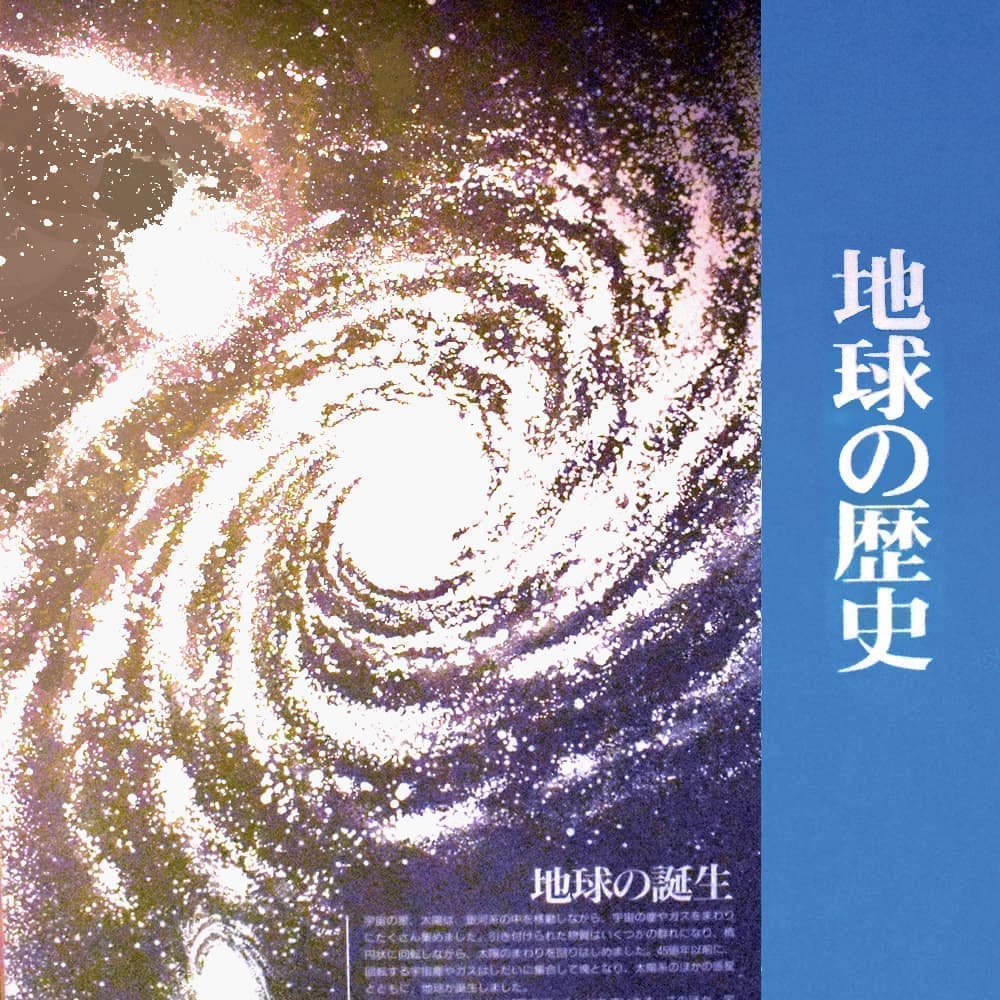
The History of the Earth
About 4.6 billion years ago, in the primitive solar system, the gas disk of the nebula chilled, and planetesimals grew by bumping into each other.

The Evolution of Life
The world’s oldest fossil is said to be the cyanobacteria found in the chert layer about 3.8 billion years ago. Algae, which photosynthesize in the sea, appeared about 3.2 billion years ago, and a large amount of oxygen was released into the atmosphere.
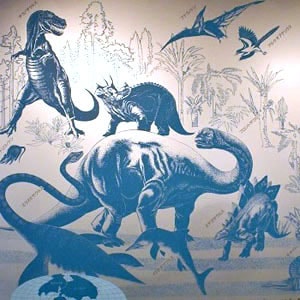
The Emergence of Dinosaurs
Dinosaurs, popular among children, evolved from reptiles about 250 million years ago in the early Mesozoic era and they went extinct due to giant meteorites which impacted the earth 66 million years ago in the late Mesozoic era.
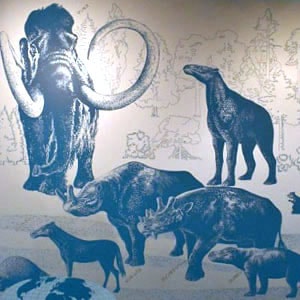
The Era of Mammals
From the latter half of the Mesozoic era, about 200 million years ago, the continents broke apart and the land topography diversified. Furthermore, in the latter half of the Cenozoic era, large mountain ranges such as the Alps were formed, the climate gradually became cooler, and dry areas increased.
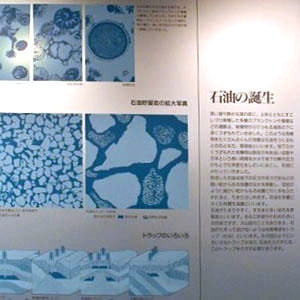
The Birth of Oil
A large amount of remains including algae gradually accumulated along with sand and soil, then sank deep to the deep-sea floor where there are anoxic conditions. The strata containing a lot of organic matter became the source rocks which produce oil.
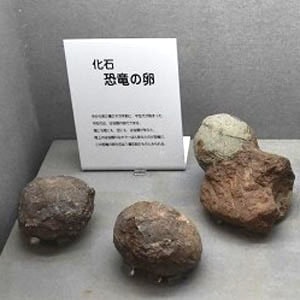
Fossils
Traces of past organisms, such as skeletons, shells, dung, and footprints, might be left in the strata. These are collectively called fossils.
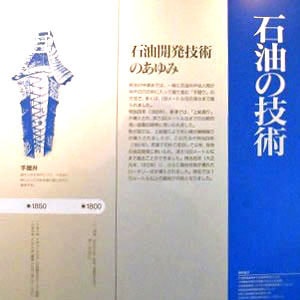
Oil Drilling Technology
Until the middle of the Meiji era, oil wells were dug by the "hand digging" method in which humans dig into well holes using their hands. In 1894, the "kazusabori" method was introduced to the Niitsu area, and it was used for the development of relatively shallow petroleum reservoirs with a depth of up to about 200 m, and that was suitable for the Niitsu oil field.
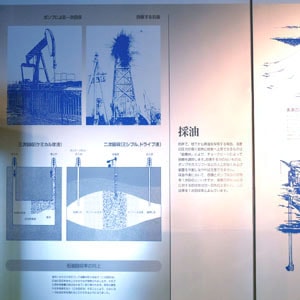
Oil Extraction
When collecting crude oil from underground, the crude oil will naturally rise up to the surface if the pressure in the reservoir is high.
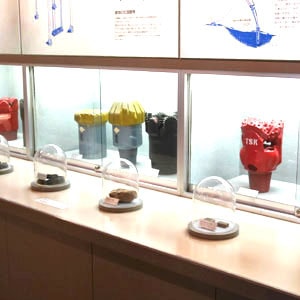
Drill Bits
When digging an oil well, a bladed edge is attached to the tip of a rotating steel pipe to cut the rock. This blade edge is called a bit.
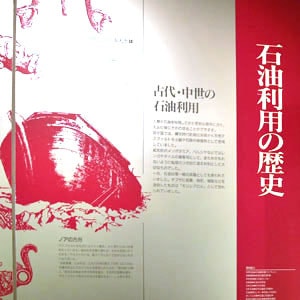
The History of Oil Usage
Human beings have a long history of using oil which can be traced back to ancient times. In Japan, natural asphalt has been used for bonding earthenware and stone tools since the end of the early Jomon period. Natural asphalt is solidified crude oil found in the strata.
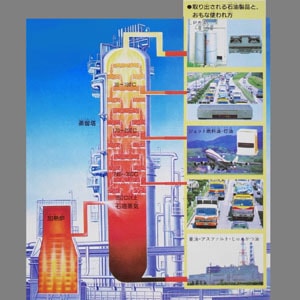
Oil Refining
Crude oil is a mixture of hydrocarbon compounds and cannot be used as is, the mixture is separated and concentrated using each component’s boiling point.
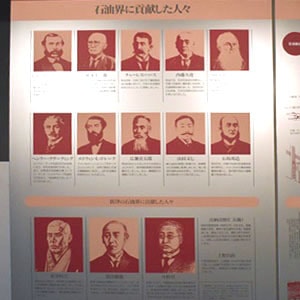
People who Contributed to Oil Development in Niigata
Here is a brief introduction of two people, Naito Hisahiro and Nakano Kanichi.
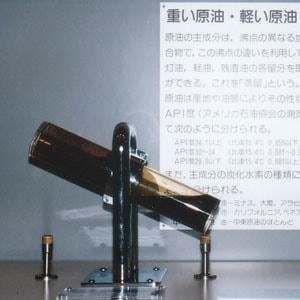
Types of Oil
Crude oil is a mixture of complex organic compounds, the main component of which is hydrocarbon a combination of carbon and hydrogen.
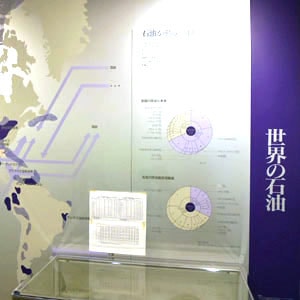
Oil around the World
This shows the areas of the world that produce oil and natural gas. From the left side of the map, there is the North Sea oil field located in the northeastern part of the United Kingdom, the Middle East oil field, which accounts for one-third of the world's oil production, as well as the oil production areas in Africa, Russia, China, Southeast Asia, and the Americas.
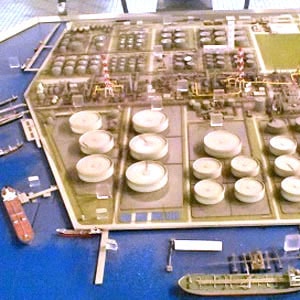
About Refineries
This is a model of a refinery in Sodegaura, Chiba Prefecture. Since the amount of oil produced in Japan is only enough for one day of use, we import large amounts of oil from overseas.